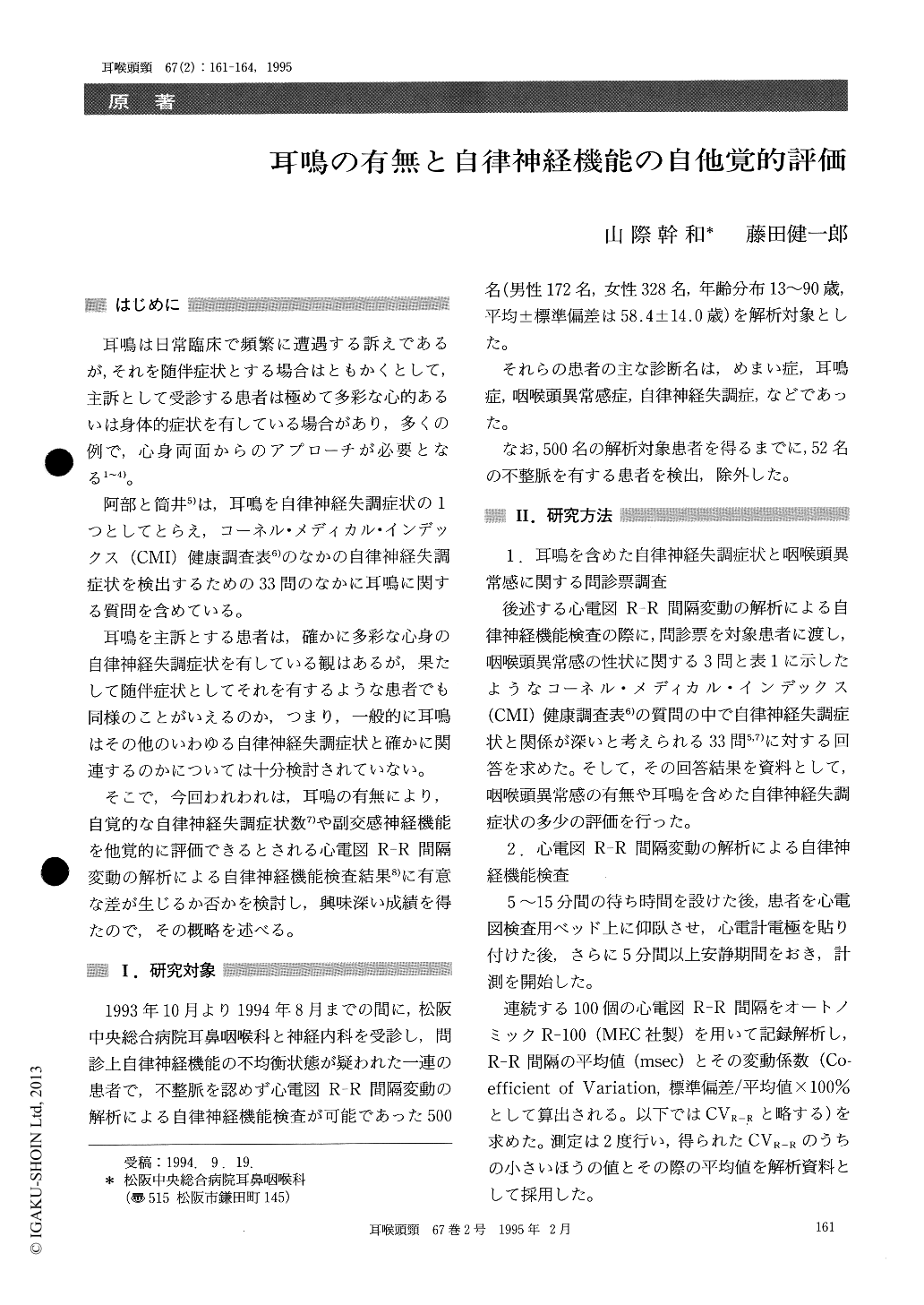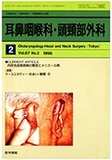Japanese
English
- 有料閲覧
- Abstract 文献概要
- 1ページ目 Look Inside
はじめに
耳鳴は日常臨床で頻繁に遭遇する訴えであるが,それを随伴症状とする場合はともかくとして,主訴として受診する患者は極めて多彩な心的あるいは身体的症状を有している場合があり,多くの例で,心身両面からのアプローチが必要となる1〜4)。
阿部と筒井5)は,耳鳴を自律神経失調症状の1つとしてとらえ,コーネル・メディカル・インデックス(CMI)健康調査表6)のなかの自律神経失調症状を検出するための33問のなかに耳鳴に関する質問を含めている。
耳鳴を主訴とする患者は,確かに多彩な心身の自律神経失調症状を有している観はあるが,果たして随伴症状としてそれを有するような患者でも同様のことがいえるのか,つまり,一般的に耳鳴はその他のいわゆる自律神経失調症状と確かに関連するのかについては十分検討されていない。
そこで,今回われわれは,耳鳴の有無により,自覚的な自律神経失調症状数7)や副交感神経機能を他覚的に評価できるとされる心電図R-R間隔変動の解析による自律神経機能検査結果8)に有意な差が生じるか否かを検討し,興味深い成績を得たので,その概略を述べる。
Five hundred patients, 172 males and 328 females, mean age 58.4 years, with suspicions of autonomic nerve dysfunction (AND) were classified into 2 groups; 140 patients with tinnitus and 360 without, and we evaluated number of positive answers to 33 questions concerning AND symptoms and coeffi-cient of variation (%) of 100 R-R intervals of electrocardiogram (CV R-R %) which may be small in the aged and/or AND subjects.
1) AND symptoms were complained more (p<0.0001 by Wilcoxon test) in tinnitus group (9.4±in mean and SD) than in non-tinnitus one (5.8 ± 4.9).
2) Relative CV R-R (%) value calculated by dividing the obtained CV R-R (%) by (5.13-0.0419 × subject's age in year) was not signifi-cantly different between the two groups.

Copyright © 1995, Igaku-Shoin Ltd. All rights reserved.


